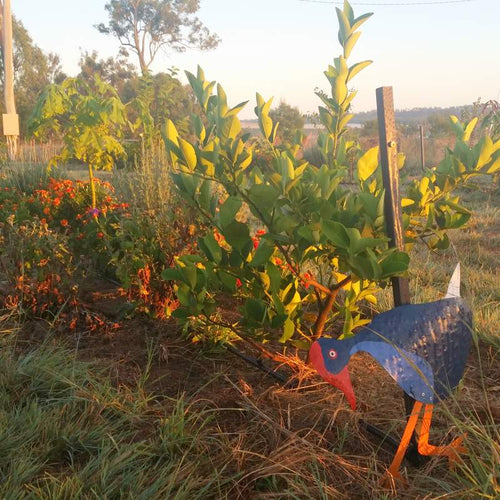How I use herbs - ginger, galangal and turmeric
Ginger, galangal, turmeric and cardamom all belong to the genus Zingiberaceae, which has to be the coolest genus name ever, it sounds like something a celebrity might name their child, I think I’ll call them Zingies for short. This is one genus name that I can remember because it expresses the taste of the spicy plants it describes!
I grow the first three Zingies, and now I’m curious about cardamom, because I think I could surely grow that too and apparently cardamom is the third most expensive spice after saffron and vanilla (cha ching! I am already planning our cardamom farm!). The first three Zingies are all used for their spicy tubers, which cardamom produces spicy pods, which are included in chai spice.
I don’t know much about cardamom yet, so I’ll stick to writing about the ones that I grow and do some cardamom research later. Last week I dug up my Zingies to harvest the tubers before they die back over the winter, so I thought it was a good time to write about them and show you some photos.
| Turmeric (Curcuma longa) |
| Ginger (Zingiber officinale) |
| I think we have the lesser galangal (Alpinia officinarum) rather than the greater galangal (Alpinia galanga) |
I planted ginger, galangal and turmeric from tubers that were starting to sprout. I planted galangal first, directly in the garden, and when it died off over winter I thought I had lost it permanently, so the next spring I planted ginger and turmeric in pots that I could move into the greenhouse. Then I noticed that the galangal had sprouted again and several years later it is now a very healthy plant, ready to harvest. So you can grow Zingies in pots or in the garden, depending on your climate, they may die back over winter and regrow in spring (I don’t know how much cold they can tolerate, we get frost but not snow). If you expect extreme cold over winter, you can grow the Zingies in a pot inside or in a greenhouse. They will take a few years to build up a good mass of tubers, so don’t overdo the harvesting right away. I like to let the clump get nice and big before I dig up the tubers. You can either dig them up as you need them (which is probably best for the plant when its small) or dig up a whole lot and preserve it, especially if you have a large plant that is taking over your garden. I just dig up what I need, trim off the stalk and roots and scrub the tuber, then its ready to use.
How to use Zingeraceae
All the Zingies tubers are known for their medicinal qualities as well as their tasty spiciness. Ginger is particularly good for treating upset digestion. It is also said to help with fever, to stimulate circulation, and used externally to treat sprained muscles. The active constituents are the oleoresins gingerol and shagaol and the volatile oil zingiberene. Galangal is also used for digestion, containing volatile oils alpha-pinene, cineole and linalool. Tumeric contains the volatile oils zingiberen and turmerone and has been shown to have strong anti-inflammatory and antioxidant properties. It can be used both internally and topically to treat allergies, and to improve circulation.
You can dry the tubers, either to make slices to use in tea, or to make a powder. If you want to make a powder, you have to boil the turmeric first (40 minutes apparently) and then dry it, and then pulverise it. You don’t need to boil ginger or galangal though (not sure why its required for turmeric, any ideas?). You can also freeze the tubers and just cut or grate a bit when you need it. You can make fermented ginger slices too, I haven’t tried that.
I use dried ginger and galangal in tea with lemon grass and rosella (and now I’ve made slices of dried turmeric, I use that too). I use ginger and galangal to make fermented drinks (galangal ale anyone?), and turmeric can also be used. Turmeric is an ingredient in many Indian curries, I am not yet proficient at curries and I use a premixed spice powder, but now I add grated turmeric to casseroles and soups to add flavour and colour.
| Galangal tubers on the left and tumeric on the right |
| Slices of galangal in the dehydrator |
| Galangal, tumeric and brahmi ale |
| boiling the turmeric before drying in |




















Did you ever find about boiling turmeric? I haven’t ever used the fresh so I thought I would do some research and I found your site. I went back to do more research and found that there seem to be two thoughts on it. But the main idea is that boiling or pressure cooking it ruins a lot of the benefits. Cooking at a high heat for short periods like is done in most of the dishes it is used in don’t ruin the benefits but over cooking does. I’m not sure where the idea to boil it came from I never did find that out.
Leave a comment